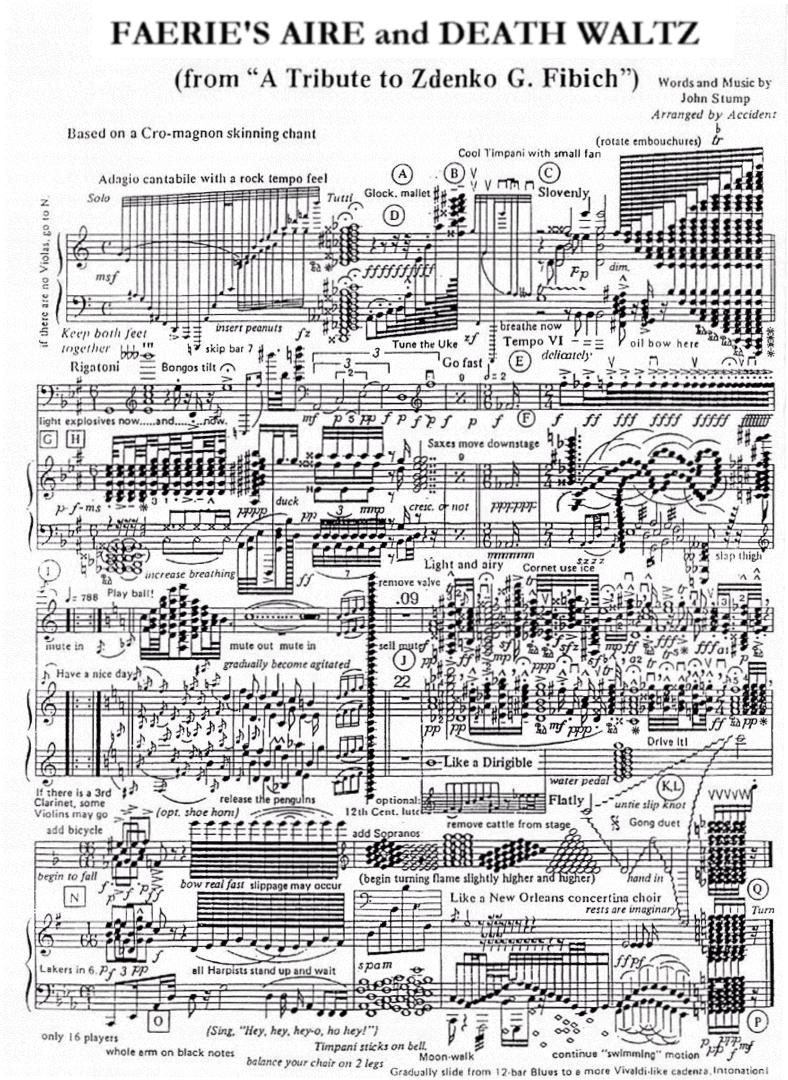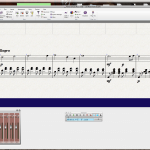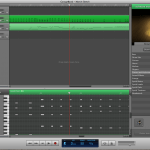Start Composing Now
It’s more than just a statement it’s a directive. The reason that most people never learn to compose, is because they never try. There are just a few things that you need in order to start composing. They are:
- A way to write down or record your composition
- A musical idea
- A way to develop that idea
- A way to hear your composition
If you can meet that criteria, you can start composing.
A Way to Write Down or Record Your Composition
This is the first step. The reason this comes first, is because if you don’t actually write down or record your idea, your just playing around. Your improvising. Your noodlin’.
There are several ways you can do this. The first two require that you can read and write music. For the last, you have to be able to play an instrument. I recommend you learn both.
Writing Down Your Composition
You basically have two options. You can write it out by hand or by computer. In terms of simplicity, writing by hand is the way to go. You do not have to learn any complicated software, and you can write just about anything you can imagine.
To get you started, I’ve added a PDF of music staff paper for free.
Music Notation Software
There are a few ways that you can approach writing your music on computer. The first is using notation software.
Notation Software
My personal favorite notation software is Sibelius. In terms of ease of use, capabilities and playback. I think it’s hard to beat. But there are plenty of other notation programs on the market.
I also like Notion 3, but I only used the demo and watched the videos. Looks pretty good though.
Free Notation Software
As far as free notation software, musescore is by far the best. It has great capabilities, it is continually improving and it has a score sharing website, musescore.com.
Different Software
There is one other main type of software that you can use to write down your music. It is called a sequencer, and is sort of half-way between recording, and writing your music by notation. I won’t go into them in detail, because it is not my preferred method right now. This is mostly because I like to look at notation versus the piano roll. Here is an example of the difference. If you’re on a Mac, Garageband is actually very capable.
Record Your Compositions
The other option is to record your compositions directly, and then write them out later. Again there are free and paid options in this category. I don’t have a favorite paid option right now, but for free, it’s hard to beat Audacity.
If you’re on mac, Garage Band is also a great option. It also comes with some notation capabilities and some robust sequencing and recording capabilities.
Sit Down, and Brain Storm Some Basic Musical Ideas
I have spoken at length in the past about basic ideas.
My absolute favorite way to start a composition is to just sit down, and start writing as many short, two and four bar phrases as I can. This is great because the best ideas usually only come after focusing for about 15-30 minutes.
Once you write a phrase, move on to another. Try not to get caught up trying to play around with them just yet. You’ll be surprised what you come up with.
In this early stage go for quantity over quality. It’s like brainstorming.
Develop Your Basic Idea
Take your best basic idea, and use some basic melodic and harmonic transformations to get new ideas. These transformations include:
- Change the underlying harmony
- Inversion (Turn the notes upside down)
- Retrograde (Write out the phrase back to front)
- Retrograde-inversion (Do both of those)
After you have created some variations, now take your best stuff and turn it into a small theme. A theme is basically an 8-bar phrase. If you want a detailed explanation, read my posts about sentences and periods.
Develop It Into a Longer Form
Once you have a theme, you can easily develop it into a longer form. The easiest ones are binary forms and ternary forms.
Ternary for instance has three sections. The first A section will be your main theme. The B section will be a contrasting middle theme, normally in a different tonal center. The last A’ section brings back the first section, but usually changes it slightly.
Normally the A section is repeated by itself, and then the B and A’ sections are repeated together, giving you the ternary form, also commonly called rounded binary.
Play It Back
The last step, is to hear your composition. You can either play it yourself, or listen to it in the notation or recording software. Enjoy it. It’s a great feeling.



Very informative. I usually always get the melody, harmony and full arrangement of a song and find it hard to restructure or put it into different keys…
I’m a bit confused by what you mean by “write.” Do you record it on the keyboard as a midi file? You mentioned earlier that you like to use the old method: pen-and-paper. How do you go about writing out the specific notes and getting the timing of those notes? Thanks.
James,
When I say write, it could be in any number of ways. I consider “writing” to be the act of recording down in some fashion musical information (paper and pencil, notation software, digital audio workstation) in a way that you can clearly understand the notes, and time values that have been recorded. I do not consider improvising and recording the audio to be “writing”. Improvising and recording the midi data would be “writing”, even though the mental process is not the same as writing by hand, or writing using notation software.
So in this sense, writing is about understanding the note and rhythm you want, and placing recording that in your chosen medium.
As you stated, I prefer writing by hand, but I frequently composed directly into my DAW, and notation software. I recommend learning all three methods well enough to use any of them at any time in your workflow.
Hi Jon,
Just to comment on what you said above on form – it seems like you said that ternary and rounded binary form are the same – which is, in fact, in correct.
Ternary is most commonly ABA (though AABA, ABBA, etc also qualify), whilst rounded binary is best described as AB1/2A. This is because, in binary, the A and B themes are very related, but in ternary, the themes contrast far more. Also, in rounded binary, the return to the A (1/2A) is just that – half of the period, whilst ternary would have the whole A period repeated.
Hey Liam. Thanks for the comment. I actually didn’t give an explanation of rounded binary in this post, but I do in this one . This is based off of William Caplin’s explanation of the differences, however, I realize this is a point of contention in music theory.
I think the most important thing for a composer though, is to just pick a plan and go with it, and let the music theorists of the future try and figure out what to call it. 🙂
Hi Jon,
I am trying to write an opera, but am confused about the orchestral parts. I currently only have harmonic chords being played. Should I add in some other melodies, figures etc. being played in the orchestra as well?
Thanks